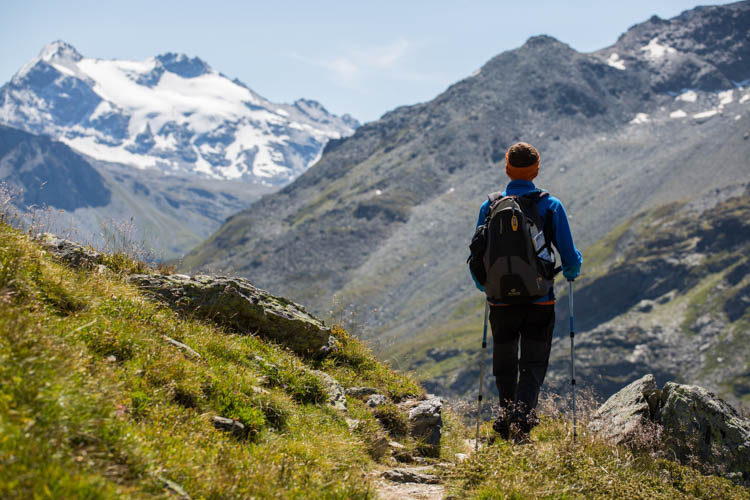Heading into the outdoors often comes with a unique set of medical issues that can sometimes have serious knock-on effects. Travel health nurse Tara Scarfe highlights some of the most common first aid issues faced by trekkers and how you should deal with them.
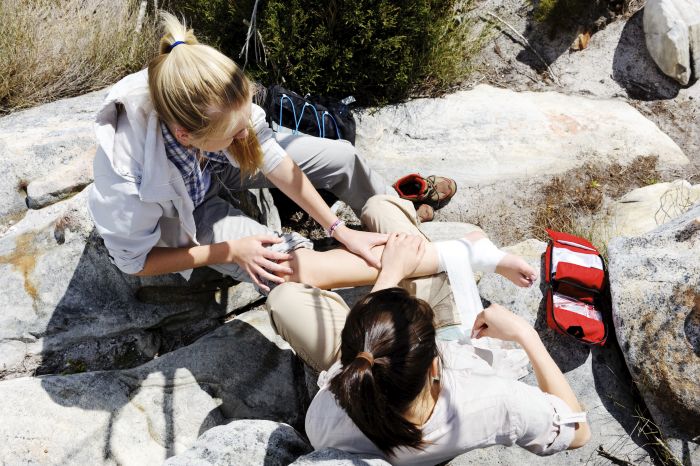
Trekking can pose a number of threats, even to the most experienced adventure traveller. Before embarking on a trip it is a good idea to ensure that someone in your party has basic first aid knowledge and a compact yet extensive first aid kit. Good preparation can ensure that you and your party remain safe. Even the most innocuous-seeming injuries can at best ruin a trip and at worst lead to potentially dangerous and life threatening situations. Here are some of the most common medical issues facing hikers, and what you can do about them.
Blisters
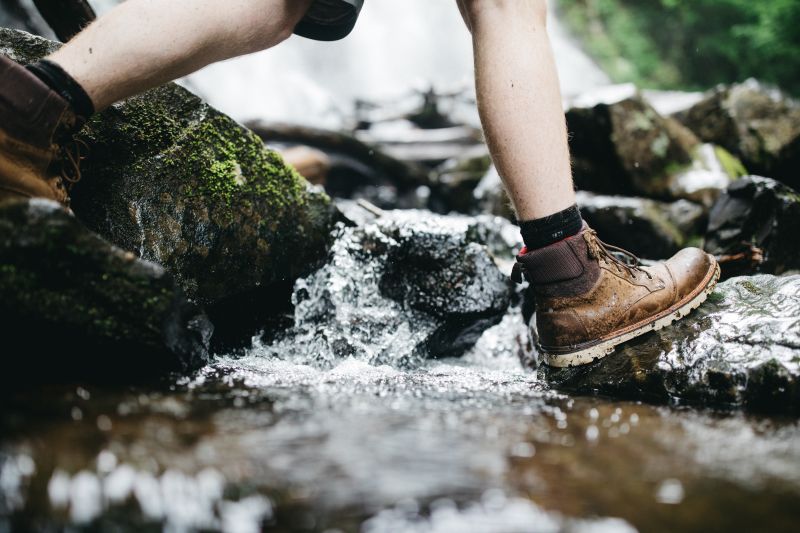
Most people are familiar with the issue of blisters and rubbing. The likelihood of blisters developing increases when participating in trekking or endurance activities, particularly if you have new or uncomfortable shoes or boots. There are a number of measures you can take to stop them forming.
Prevention:
- Wear good quality waterproof hiking boots that fit well with no pressure points, and have been well broken in.
- Wear wool socks that offer good support. Avoid cotton socks as they retain moisture.
- Try to ensure the feet remain dry. If the feet get wet, it increases friction between the skin, the sock and the shoe, allowing blisters to form. A foot powder spray can help keep feet dry from perspiration.
Treatment:
- If a blister has formed and already burst, clean the blister with antiseptic spray or cream and cover it with a plaster or hydrocolloid blister dressing such as Compeed. These are available over the counter in most pharmacies and are better than normal plasters as they keep the wound moist, so it can heal faster.
- If the blister has not burst, avoid piercing it as this can encourage infection. Clean it with antiseptic spray or cream and cover it using a soft dressing or gauze.
Read more on how to prevent and treat blisters here.
Knee and ankle strains
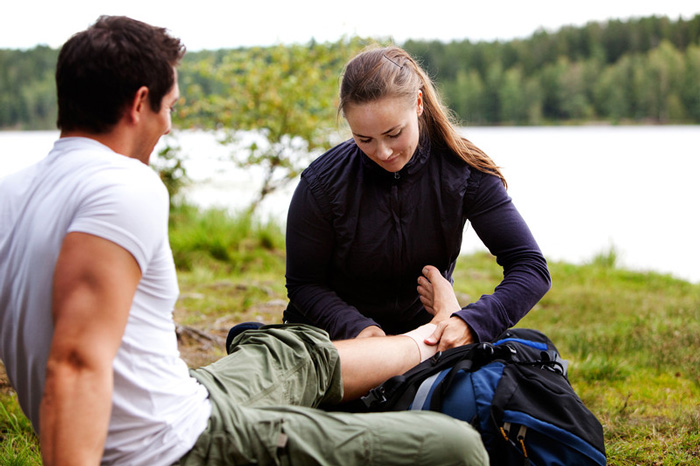
When hiking, be careful with your footing and keep an eye out for loose stones, rocks and anything you could stumble over. Falls resulting in knee and ankle strains are common among trekkers and, if you do take a tumble, being prepared can help to minimise long-term damage.
Prevention:
- Wear boots or shoes offering suitable support for the terrain you expect to encounter.
- Warm up stiff muscles with some gentle stretching exercises before you start the day.
- Be aware of your surroundings and look where you are going!
Treatment:
- If you fall and twist a knee or ankle, assess whether you require urgent medical assistance. If you are in extreme pain, suffering extensive blood loss or cannot put weight on the injured limb, contact emergency services immediately.
- For minor strains, it is sensible to move to a safe place where you can rest while you treat your injury.
- Ibuprofen gel can be used to soothe aching muscles.
- Ibuprofen tablets can help reduce swollen joints.
- A knee or ankle Tubigrip can be worn to offer additional support.
- Take paracetamol for pain relief.
Cuts
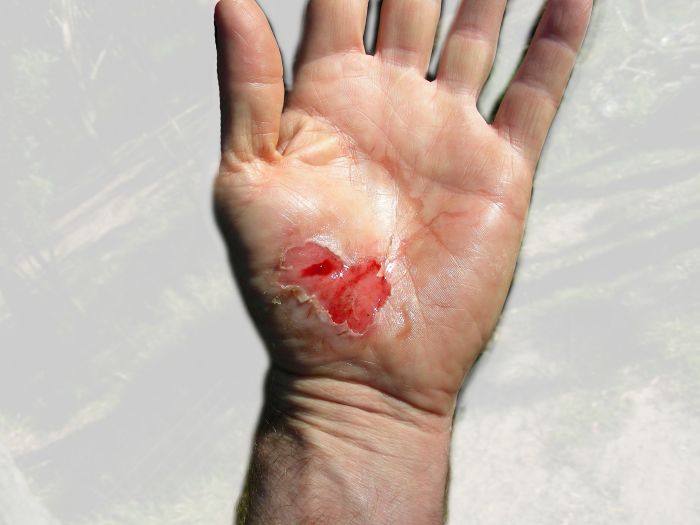 Photo: Christy Tucker
Photo: Christy Tucker
Falling on rocky, unstable terrain can result in cuts as well as twists and sprains. If you sustain a cut, keep it clean and free of debris and stop the blood flow as soon as possible. If the wound is gaping or keeps bleeding seek medical advice immediately.
Prevention:
- Watch your footing and take your time.
- Ensure your tetanus vaccination is up to date. This is normally free with your NHS GP.
Treatment:
- Use antiseptic spray to disinfect the wound.
- Stop the flow of blood by firmly pressing some sterile gauze on the affected area.
- Once bleeding has subsided, apply a plaster or a sterile dressing, using micropore tape and a bandage to the cut.
- Do not take ibuprofen or aspirin if you sustain a cut. They can thin the blood and therefore, increase blood flow/loss.
Dehydration
 Photo: Survival Mastery
Photo: Survival Mastery
It is vital that you keep yourself well hydrated when hiking, by continuously having sips of water throughout the day. This is especially important during hot weather. A good indication of how hydrated you are is by assessing the colour of your urine. If your urine appears dark and concentrated this is a sign you may be dehydrated and need to increase your fluid intake. It is recommended to avoid caffeine and soft drinks. Water is always best for fluid replacement.
Prevention:
- Sip water regularly.
- Carry an appropriate amount of water for your trip and be aware of where the next place to fill up will be.
- Bring water sterilisation tablets if the water is not from a sterile source.
- Avoid trekking in the midday sun when you are likely to sweat more.
- Wear sunblock in sunny conditions (even in cold weather).
Treatment:
- If you do become dehydrated then immediately increase your water consumption.
- Oral rehydration salts (available in any pharmacy) can help balance the minerals in your body.
- If rehydration salts are not available, consuming a salty snack and a sugary drink should have a similar effect.
Find out how to purify water in the wild here.
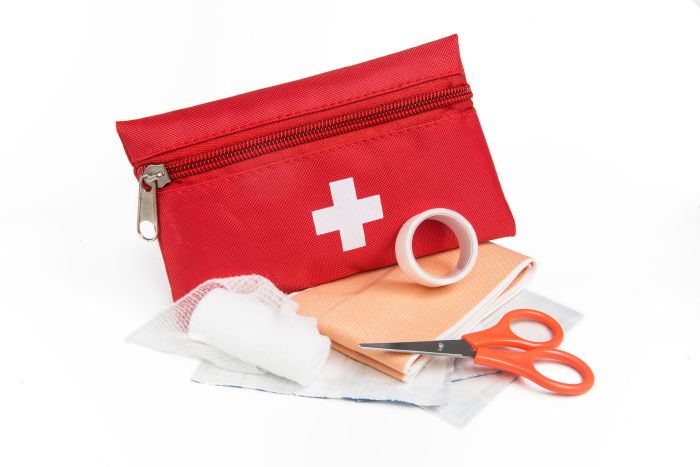
Photo: DLG Images
A basic first aid kit for hiking should include:
- Plasters of varying shapes and sizes
- A knee and ankle support
- Bandages
- Gauze
- Sterile dressings
- Micropore tape
- Ibuprofen tablets
- Ibuprofen gel
- Paracetamol
- Oral rehydration salts
- Antiseptic cream or spray
- Sunblock
First aid courses
To learn more, why not sign up for a first aid course geared towards outdoorsy people? That’s what editor Rosie Fuller did in the Peak District with the company Will4Advenutre (www.will4adventure.com)
Intro photo: Franck Michel



